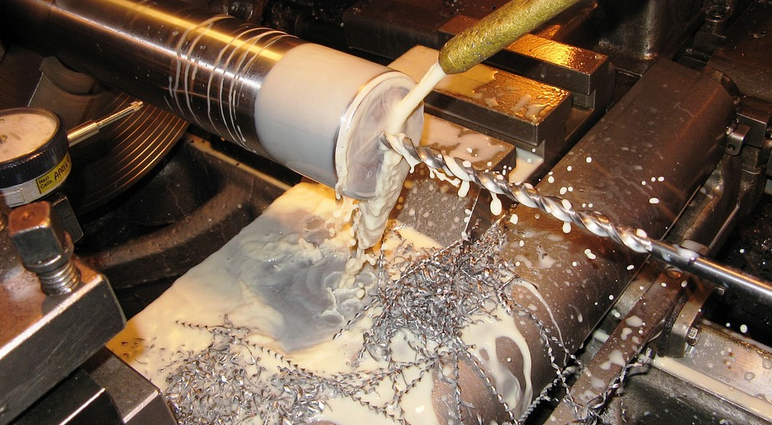Understanding the Nitty Gritties of a Challenging Weld
Carbon steel, with its raw strength and versatility, has long been a go-to material for diverse industries. However, when confronted with stainless steel’s corrosion resistance and high-temperature tolerance, a new challenge arises – welding carbon to stainless steel. This isn’t a simple task, as the two materials possess distinct attributes that can influence the weld quality and longevity of the joint.
Stainless steel is renowned for its resistance against corrosion, thanks to the presence of chromium forming a protective oxide layer on the surface. This barrier effectively protects the metal from environmental degradation, making it suitable for demanding applications like chemical processing, medical devices, and food handling. However, this very characteristic also creates hurdles in welding processes because the chromium-rich layer can form a barrier that prevents the molten weld pool from joining seamlessly with carbon steel.
Carbon steel, on the other hand, is known for its inherent strength and versatility. It finds use in construction, automotive, and manufacturing industries due to its ability to withstand high loads and temperatures. But, carbon steel can be subject to rusting if exposed to moisture and oxygen over time. This property requires careful maintenance and attention to prevent premature degradation.
The challenge lies in the distinct chemical compositions of these materials that hinder a traditional weld process. Carbon steel is primarily composed of iron with a variable amount of carbon, while stainless steel contains chromium and nickel along with other elements. These different compositions can result in variations in melting points and solidification rates during welding.
To overcome the challenges posed by this seemingly complex combination, specialized techniques are employed to ensure a strong and lasting weld. One approach is through filler metal selection. For instance, using electrodes specifically designed for stainless steel applications could help achieve the perfect fusion between carbon steel and stainless steel. These electrodes can be carefully chosen based on their composition and melting point, ensuring compatibility with both materials.
Another key aspect of successful welding is achieving a proper weld pool and controlling heat input during the process. Welding processes like TIG (gas tungsten arc) or MIG (metal inert gas) offer control over the weld pool temperature, which is crucial for avoiding surface defects and ensuring a smooth, uniform weld.
Understanding the interplay of these factors is vital to achieving successful welding between carbon steel and stainless steel. Proper training in welding techniques, selection of appropriate equipment, and careful consideration of material properties are essential before undertaking any welding project involving these materials.
Welding Techniques for Carbon Steel with Stainless Steel
Whether you’re a seasoned welder or just starting out, mastering the art of welding carbon to stainless steel presents its own set of challenges. The key is to understand the fundamental principles of welding and apply them specifically to this unique combination.
Let’s delve into some specific techniques that help you achieve successful welds:
* **Gas Tungsten Arc Welding (GTAW) or TIG Welding:** This process involves a non-consumable tungsten electrode, which creates an arc between the electrode and the base metal. It’s known for its precision, control over weld penetration, and suitability for thin materials. The filler metal is typically added in small amounts to build up the weld pool.
**Shielded Metal Arc Welding (SMAW) or Stick Welding:** This process utilizes an electrode coated with flux that shields the molten weld pool from atmospheric contamination. It’s known for its simplicity, cost-effectiveness, and ability to be used in confined spaces. SMAW can be suitable when welding thicker materials.
**Submerged Arc Welding (SAW):** In this technique, a consumable electrode is continuously fed into the weld pool as it forms. It’s ideal for thick materials and high-speed applications, but careful control of heat input is crucial to prevent distortion.
Tack Welding and Preheating: Setting the Stage for Success
Tack welding, or using small welds to hold parts together temporarily, is a crucial step before applying full-size weld beads. This preliminary technique helps align the metal pieces accurately and creates a stable foundation for further welding.
Preheating the base metals before welding can significantly improve the quality of the joint. This process involves heating the sections to increase their internal temperature, aiding in the melting of the filler material between carbon steel and stainless steel. This controlled heat input promotes better fluidity and reduces weld defects.
Post-Weld Treatment: Ensuring Longevity and Strength
Post welding treatment is an essential aspect of achieving long-term success with a weld involving carbon steel and stainless steel. This involves several steps that ensure the metal remains strong and free from corrosion.
These include:
*
**Cleaning:** Remove any splatter or debris from the weld bead to avoid contamination from contaminants that could affect the integrity of the join.
*
**Stress Relief:** This technique involves heating and cooling the joint slowly to relieve internal stresses caused by welding, preventing fatigue failures and cracks.
*
**Surface Treatments:** Applying a protective coating like a zinc oxide or epoxy paint helps prevent corrosion and extends the lifespan of the weld.
By incorporating these post-weld treatments, you significantly enhance the overall performance and longevity of your joint.
Welding Carbon to Stainless Steel: It’s All About Precision and Patience
Welding carbon steel with stainless steel might seem like a daunting task. However, by understanding the intricacies of these materials and employing the right techniques, you can forge strong, lasting joints that are both durable and reliable. Remember, patience, precision, and careful planning are key to success in welding this unique combination.
As with any welding endeavor, proper training, equipment selection, and a meticulous approach will play a crucial role in achieving optimal results. Don’t hesitate to seek guidance from experienced welders or refer to reputable welding resources for detailed information on specific techniques and safety precautions.
